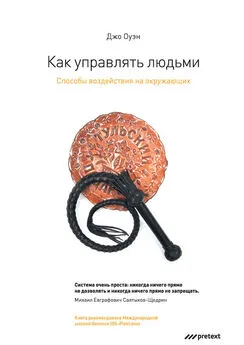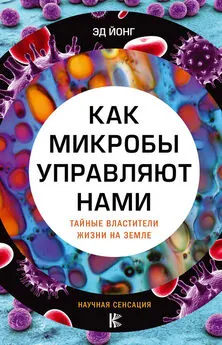Аланна Коллен - 10% Human. Как микробы управляют людьми
- Название:10% Human. Как микробы управляют людьми
- Автор:
- Жанр:
- Издательство:Синдбад
- Год:2018
- Город:Москва
- ISBN:978-5-906837-94-3
- Рейтинг:
- Избранное:Добавить в избранное
-
Отзывы:
-
Ваша оценка:
Аланна Коллен - 10% Human. Как микробы управляют людьми краткое содержание
Книга Коллен — это увлекательный рассказ о последних достижениях микробиологии. От состояния микрофлоры человека зависит его вес, бесперебойность работы иммунной системы, душевное здоровье и даже… выбор спутника жизни. Причину многих недугов современного человека — ожирения, аутизма, психических заболеваний, пищевых расстройств, аллергий, аутоиммунных нарушений и рака — следует искать в неумении беречь самых преданных и надежных помощников — наших «родных» микробов.
Наука о микробах открывает новые горизонты перед современной медициной. В том числе утверждает — и это хорошая новость, — что мы способны влиять на состояние микроорганизмов в нужном нам направлении.
10% Human. Как микробы управляют людьми - читать онлайн бесплатно полную версию (весь текст целиком)
Интервал:
Закладка:
7. Ajslev, T.A. et al . (2011). Childhood overweight after establishment of the gut microbiota: the role of delivery mode, pre-pregnancy weight and early administration of antibiotics. International Journal of Obesity 35: 522–529. 8. Cho, I. et al. (2012). Antibiotics in early life alter the murine colonic microbiome and adiposity. Nature 488: 621–626.
9. Cox, L.M. et al. (2014). Altering the intestinal microbiota during a critical developmental window has lasting metabolic consequences. Cell 158: 705–721.
10. Hu, X., Zhou, Q. and Luo, Y. (2010). Occurrence and source analysis of typical veterinary antibiotics in manure, soil, vegetables and groundwater from organic vegetables bases, northern China. Environmental Pollution 158: 2992–2998.
11. Niehus, R.M.A. and Lord, C. (2006). Early medical history of children with autistic spectrum disorders. Journal of Developmental and Behavioral Pediatrics 27 (S2): S120–S127.
12. Margolis, D.J., Hoffstad, O. and Biker, W. (2007). Association or lack of association between tetracycline class antibiotics used for acne vulgaris and lupus erythematosus. British Journal of Dermatology 157: 540–546. 13. Tan, L. et al . (2002). Use of antimicrobial agents in consumer products. Archives of Dermatology 138: 1082–1086.
14. Aiello, A.E. et al. (2008). Effect of hand hygiene on infectious disease risk in the community setting: A meta-analysis. American Journal of Public Health 98: 1372–1381.
15. Bertelsen, R.J. et al. (2013). Triclosan exposure and allergic sensitization in Norwegian children. Allergy 68: 84–91.
16. Syed, A.K. et al. (2014). Triclosan promotes Staphylococcus aureus nasal colonization. mBio 5: e01015–13.
17. Dale, R.C. et al. (2004). Encephalitis lethargica syndrome; 20 new cases and evidence of basal ganglia autoimmunity. Brain 127: 21–33.
18. Mell, L.K., Davis, R.L. and Owens, D. (2005). Association between streptococcal infection and obsessive-compulsive disorder, Tourette’s syndrome, and tic disorder. Pediatrics 116: 56–60.
19. Fredrich, E. et al. (2013). Daily battle against body odor: towards the activity of the axillary microbiota. Trends in Microbiology 21: 305–312. 20. Whitlock, D.R. and Feelisch, M. (2009). Soil bacteria, nitrite, and the skin. In: Rook, G.A.W. ed. The Hygiene Hypothesis and Darwinian Medicine . Birkhauser Basel, p. 103–115.
1. Zhu, L. et al . (2011). Evidence of cellulose metabolism by the giant panda gut microbiome. Proceedings of the National Academy of Sciences 108: 17714–17719.
2. De Filippo, C. et al. (2010). Impact of diet in shaping gut microbiota revealed by a comparative study in children from Europe and rural Africa. Proceedings of the National Academy of Sciences 107: 14691–14696.
3. Ley, R. et al. (2006). Human gut microbes associated with obesity. Nature 444: 1022–1023.
4. Foster, R. and Lunn, J. (2007). 40th Anniversary Briefing Paper: Food availability and our changing diet. Nutrition Bulletin 32: 187–249.
5. Lissner, L. and Heitmann, B.L. (1995). Dietary fat and obesity: evidence from epidemiology. European Journal of Clinical Nutrition 49: 79–90.
6. Barclay, A.W. and Brand-Miller, J. (2011). The Australian paradox: A substantial decline in sugars intake over the same timeframe that overweight and obesity have increased. Nutrients 3: 491–504.
7. Heini, A.F. and Weinsier, R.L. (1997). Divergent trends in obesity and fat intake patterns: The American paradox. American Journal of Medicine 102: 259–264.
8. David, L.A. et al . (2014). Diet rapidly and reproducibly alters the human gut microbiome. Nature 505: 559–563.
9. Hehemann, J.-H. et al. (2010). Transfer of carbohydrate-active enzymes from marine bacteria to Japanese gut microbiota. Nature 464: 908–912.
10. Cani, P.D. et al. (2007). Metabolic endotoxaemia initiates obesity and insulin resistance. Diabetes 56: 1761–1772.
11. Neyrinck, A.M. et al. (2011). Prebiotic effects of wheat arabinoxylan related to the increase in bifidobacteria, Roseburia and Bacteroides/Prevotella in diet-induced obese mice. PLoS ONE 6: e20944.
12. Everard, A. et al . (2013). Cross-talk between Akkermansia muciniphila and intestinal epithelium controls diet-induced obesity. Proceedings of the National Academy of Sciences 110: 9066–9071.
13. Maslowski, K.M. (2009). Regulation of inflammatory responses by gut microbiota and chemoattractant receptor GPR43. Nature 461: 1282–1286.
14. Brahe, L.K., Astrup, A. and Larsen, L.H. (2013). Is butyrate the link between diet, intestinal microbiota and obesity-related metabolic disorders? Obesity Reviews 14: 950–959.
15. Slavin, J. (2005). Dietary fibre and body weight. Nutrition 21: 411–418. 16. Liu, S. (2003). Relation between changes in intakes of dietary fibre and grain products and changes in weight and development of obesity among middle-aged women. American Journal of Clinical Nutrition 78: 920–927. 17. Wrangham, R. (2010). Catching Fire: How Cooking Made Us Human. Profile Books, London.
1. Funkhouser, L.J. and Bordenstein, S.R. (2013). Mom knows best: The universality of maternal microbial transmission. PLoS Biology 11: e10016331.
2. Dominguez-Bello, M.-G. et al. (2011). Development of the human gastrointestinal microbiota and insights from high-throughput sequencing. Gastroenterology 140: 1713–1719.
3. Se Jin Song, B.S., Dominguez-Bello, M.-G. and Knight, R. (2013). How delivery mode and feeding can shape the bacterial community in the infant gut. Canadian Medical Association Journal 185: 373–374.
4. Kozhumannil, K.B., Law, M.R. and Virnig, B.A. (2013). Cesarean delivery rates vary tenfold among US hospitals; reducing variation may address quality and cost issues. Health Affairs 32: 527–535.
5. Gibbons, L. et al . (2010). The global numbers and costs of additionally needed and unnecessary Caesarean sections performed per year: Overuse as a barrier to universal coverage. World Health Report Background Paper , No. 30.
6. Cho, C.E. and Norman, M. (2013). Cesarean section and development of the immune system in the offspring. American Journal of Obstetrics & Gynecology 208: 249–254.
7. Schieve, L.A. et al. (2014). Population attributable fractions for three perinatal risk factors for autism spectrum disorders, 2002 and 2008 autism and developmental disabilities monitoring network. Annals of Epidemiology 24: 260–266.
8. MacDorman, M.F. et al. (2006). Infant and neonatal mortality for primary Cesarean and vaginal births to women with ‘No indicated risk’, United States, 1998–2001 birth cohorts. Birth 33: 175–182.
9. Dominguez-Bello, M.-G. et al. (2010). Delivery mode shapes the acquisition and structure of the initial microbiota across multiple body habitats in newborns. Proceedings of the National Academy of Sciences 107: 11971–11975.
10. McVeagh, P. and Brand-Miller, J. (1997). Human milk oligosaccharides: Only the breast. Journal of Paediatrics and Child Health 33: 281–286.
11. Donnet-Hughes, A. (2010). Potential role of the intestinal microbiota of the mother in neonatal immune education. Proceedings of the Nutrition Society 69: 407–415.
12. Cabrera-Rubio, R. et al. (2012). The human milk microbiome changes over lactation and is shaped by maternal weight and mode of delivery. American Journal of Clinical Nutrition 96: 544–551.
13. Stevens, E.E., Patrick, T.E. and Pickler, R. (2009). A history of infant feeding. The Journal of Perinatal Education 18: 32–39.
14. Heikkilä, M.P. and Saris, P.E.J. (2003). Inhibition of Staphylococcus aureus by the commensal bacteria of human milk. Journal of Applied Microbiology 95: 471–478.
15. Chen, A. and Rogan, W.J. et al. (2004). Breastfeeding and the risk of postneonatal death in the United States. Pediatrics 113: e435–e439.
16. Ip, S. et al. (2007). Breastfeeding and maternal and infant health outcomes in developed countries. Evidence Report/Technology Assessment (Full Report) 153: 1–186.
17. Division of Nutrition and Physical Activity: Research to Practice Series No. 4: Does breastfeeding reduce the risk of pediatric overweight? Atlanta: Centers for Disease Control and Prevention, 2007.
18. Stuebe, A.S. (2009). The risks of not breastfeeding for mothers and infants. Reviews in Obstetrics & Gynecology 2: 222–231.
19. Azad, M.B. et al. (2013). Gut microbiota of health Canadian infants: profiles by mode of delivery and infant diet at 4 months. Canadian Medical Association Journal 185: 385–394.
20. Palmer, C. et al . (2007). Development of the human infant intestinal microbiota. PLoS Biology 5: 1556–1573.
21. Yatsunenko, T. et al. (2012). Human gut microbiome viewed across age and geography. Nature 486: 222–228.
22. Lax, S. et al. (2014). Longitudinal analysis of microbial interaction between humans and the indoor environment. Science 345: 1048–1051.
23. Gajer, P. et al. (2012). Temporal dynamics of the human vaginal microbiota. Science Translational Medicine 4: 132ra52.
24. Koren, O. et al. (2012). Host remodelling of the gut microbiome and metabolic changes during pregnancy. Cell 150: 470–480.
25. Claesson, M.J. et al. (2012). Gut microbiota composition correlates with diet and health in the elderly. Nature 488: 178–184.
1. Metchnikoff, E. (1908). The Prolongation of Life: Optimistic Studies . G.P. Putnam’s Sons, New York.
2. Bested, A.C., Logan, A.C. and Selhub, E.M. (2013). Intestinal microbiota, probiotics and mental health: from Metchnikoff to modern advances: Part I – autointoxication revisited. Gut Pathogens 5: 1–16.
3. Hempel, A. et al. (2012). Probiotics for the prevention and treatment of antibiotic-associated diarrhea: A systematic review and metaanalysis. Journal of the American Medical Association 307: 1959–1969.
4. AlFaleh, K. et al. (2011). Probiotics for prevention of necrotizing enterocolitis in preterm infants. Cochrane Database of Systematic Reviews , Issue 3.
5. Ringel, Y. and Ringel-Kulka, T. (2011). The rationale and clinical effectiveness of probiotics in irritable bowel syndrome. Journal of Clinical Gastroenterology 45(S3): S145–S148.
6. Pelucchi, C. et al. (2012). Probiotics supplementation during pregnancy or infancy for the prevention of atopic dermatitis: A meta-analysis. Epidemiology 23: 402–414.
7. Calcinaro, F. (2005). Oral probiotic administration induces interleukin-10 production and prevents spontaneous autoimmune diabetes in the nonobese diabetic mouse. Diabetologia 48: 1565–1575.
8. Goodall, J. (1990). The Chimpanzees of Gombe: Patterns of Behavior. Harvard University Press, Cambridge.
9. Fritz, J. et al. (1992). The relationship between forage material and levels of coprophagy in captive chimpanzees (Pan troglodytes). Zoo Biology 11: 313–318.
Читать дальшеИнтервал:
Закладка:










